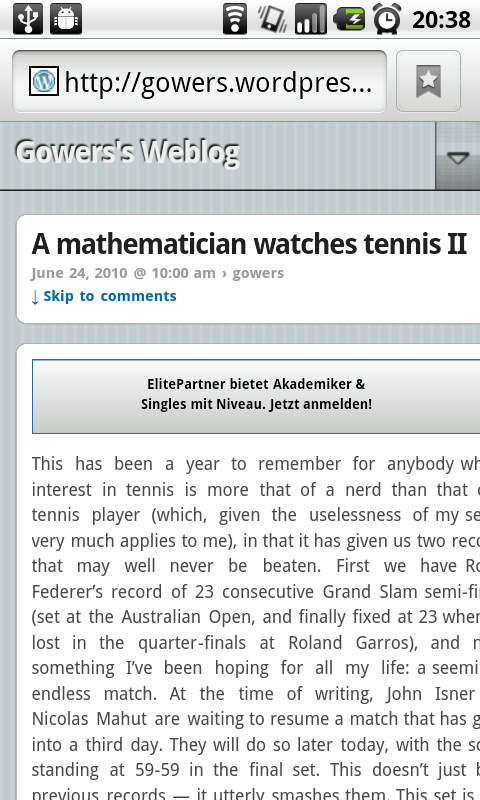Kloostermania fans can look up what the new version 0.15 does on the Kloostermania page…
In particular, I’ve added the possibility to display Salié sums instead of Kloosterman sums. Precisely, it shows

instead of T(1,1;p) because the values of the latter are not as interesting, due to the fact that the root s of

modulo a prime are rather simple to compute….
This leads to an intriguing game to play: can you tell the difference between the two types of sums?
First, one must take a prime congruent to 1 modulo 4 (otherwise the Salié sum is zero in that case, which Kloosterman sums never are) for the question to be interesting. Then, there is a kind of theoretical/conjectural answer if you are allowed to look at many instances of the two sums (i.e., you can start the slideshow and observe it for a long time — skipping primes which are 3 mod 4 — without changing the type of sums): their distribution is not the same (conjecturally)! Precisely, the angles θp of the Salié sums, for primes which are 1 modulo 4, defined by

are equidistributed on [0,π] (for the Lebesgue measure; this is the wonderful theorem of Duke, Friedlander and Iwaniec), whereas one expects those of Kloosterman sums to be distributed according to the Sato-Tate measure

In particular, the Kloosterman sums should be more often “small”, in some sense, than the Salié sums since the density of the Sato-Tate measure vanishes at θ=0 (which corresponds to a maximal sum).
But what if you’re not allowed to start a long slideshow? For a fixed p, I don’t think one can expect to be able to guess more precisely, just from the values of the sums, than by throwing a coin and choosing Heads/Kloosterman, Tails/Salié. But I wonder if the shapes of the graph of partial sums (as drawn by the program…) could be used to extract more information to lead to a guess with better than even odds of being correct? Or if, at least, it could be used to shorten the length of time one would need to look at the slideshow before being sure of the answer from the distribution perspective?

